I don’t know what I was doing in February, but I completely missed that Logitech launched their new Powerplay 2 Wireless Charging Mouse Pad. I’ve been using the original Powerplay going back to the original launch of the Logitech Pro Wireless mouse. I even took a look at the Powerplay back in 2018. Some variation of the Logitech Pro Wireless, along with our original Powerplay has been my main mouse and mousepad for the last seven years. Even back at its launch, I was vocal of a few big issues I had with the Powerplay, but not having to charge my mouse and it working with my preferred mouse shape, I have stuck with it. But I have been pushing for years to see an updated design, so checking out the new Powerplay 2 was a must. The question is, have they improved on the original design and fixed some of the issues I’ve had with it? Let’s find out!
Product Name: Logitech Powerplay 2 Wireless Charging Mouse Pad
Review Sample Provided by: Logitech
Written by: Wes Compton
Amazon Affiliate Link: HERE

Photos and Features
Before diving into the features of the Powerplay 2, I did want to touch on the packaging. The exterior of the packaging for the new design looks very similar to the original Powerplay. It has that Logitech grey background on the front and back with the Powerplay 2 branding in their signature blue with a reflective finish. The front of the box has the mouse pad on it along with a mouse to show it is charging. The original Powerplay was similar, only they added an effect to show that the mouse was charging on that one. On the back, there is a second picture of the Powerplay, this time with lines going to a few locations on it and the mouse to highlight a few features. Then, below that, they have line drawings to touch on a few other features. There is also a specification listing and a list of what you will find inside on the back as well, but the specifications (like on their website) are extremely simple showing all of the dimensions and touching on the 2-year warranty. The main change here from the original is in the construction of the box itself, which for the original was thicker, where this design uses less material, just an example of Logitech trying to be a little more sustainable which we have seen in the last 4 or 5 years.
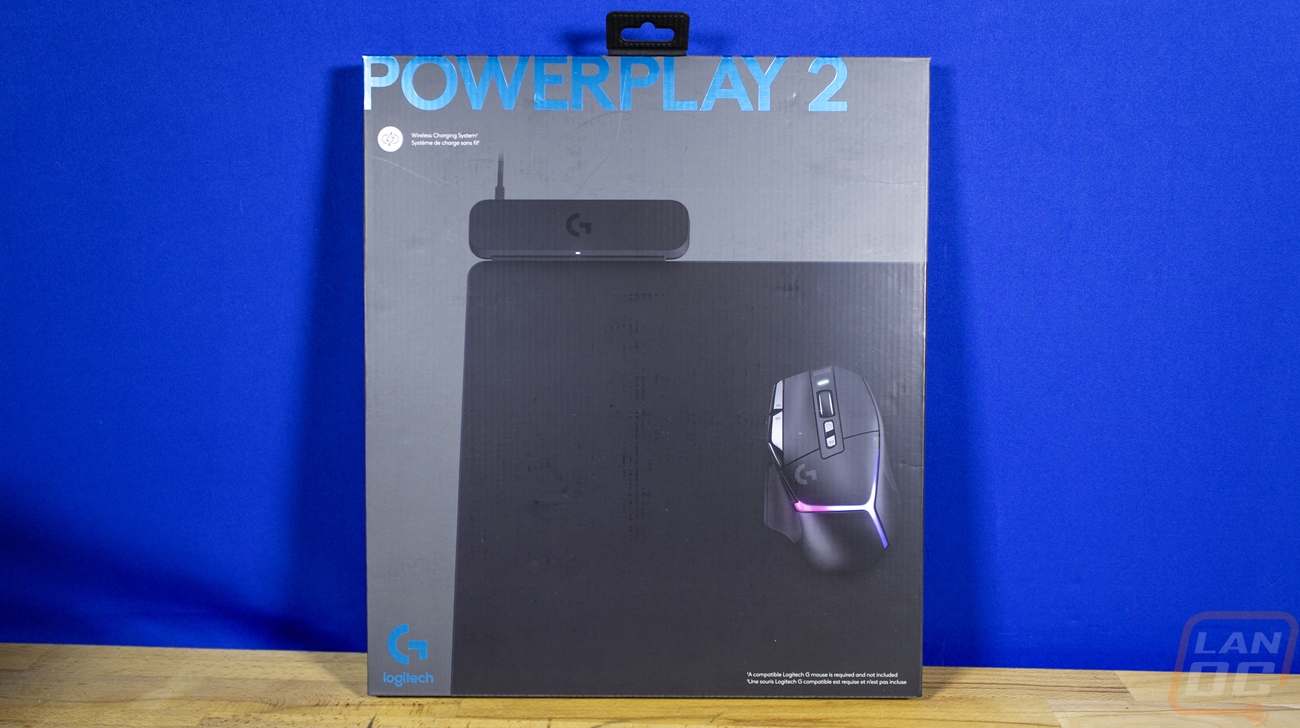
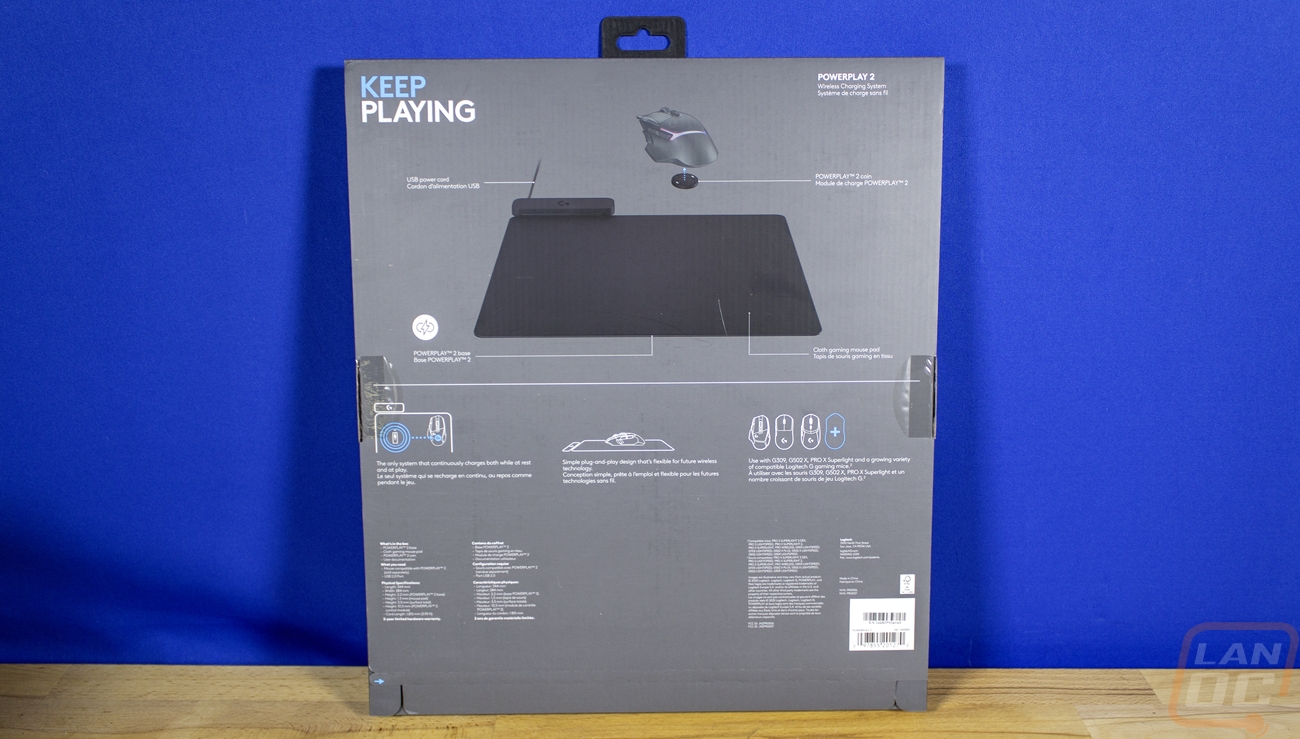
When we open the packaging up, you can see that the box is folded up to give more structure and there are a few line drawings that show how to set things up along with a QR code and link to support to get you going. Under all of that is the Powerplay 2 itself, which comes with a paper over the mousepad that says Keep Playing. Beyond the Powerplay 2 and the Powerplay coin, the only other things in the box is a paper with the warranty and safety information and a paper with information on how the Powerplay 2 is to be powered by a 5vdc 500mA minimum USB connection.
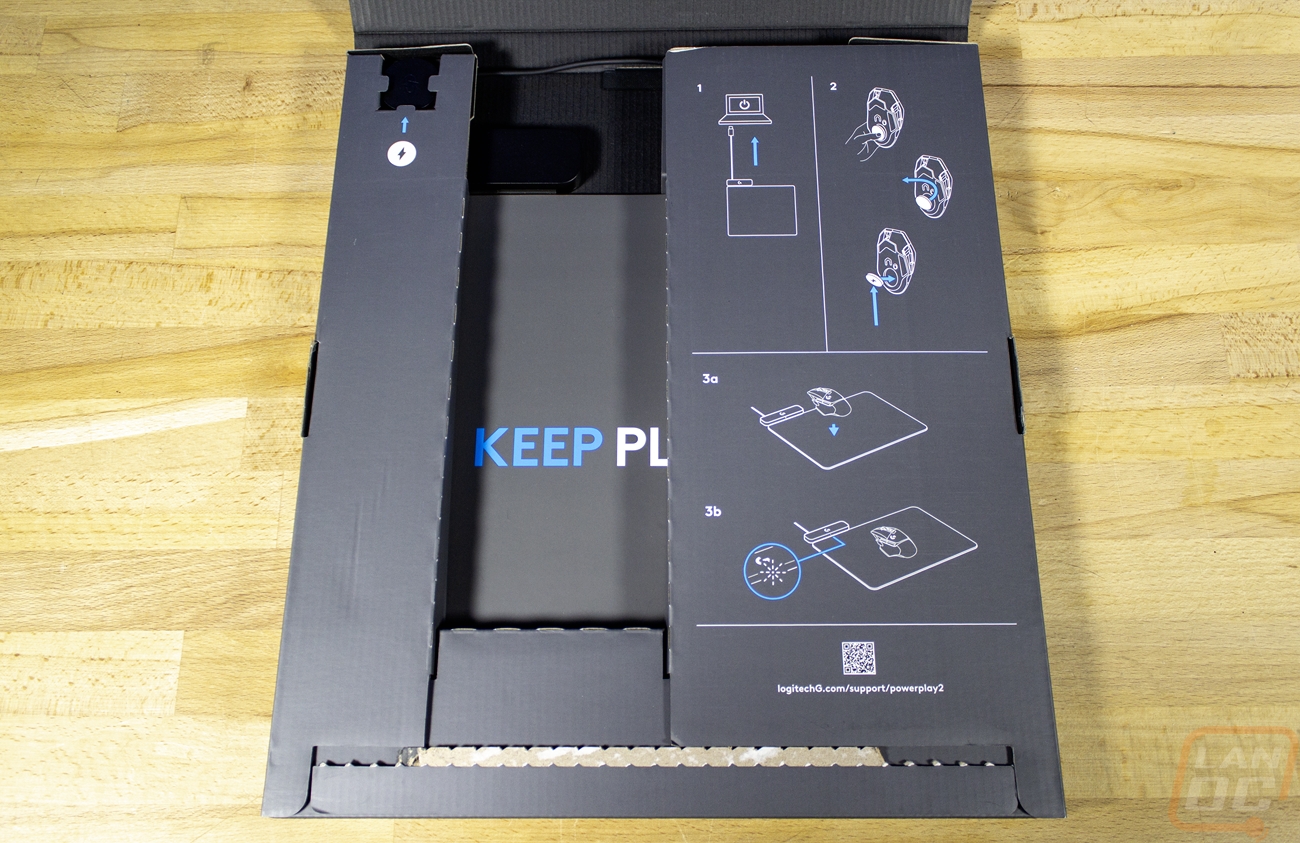
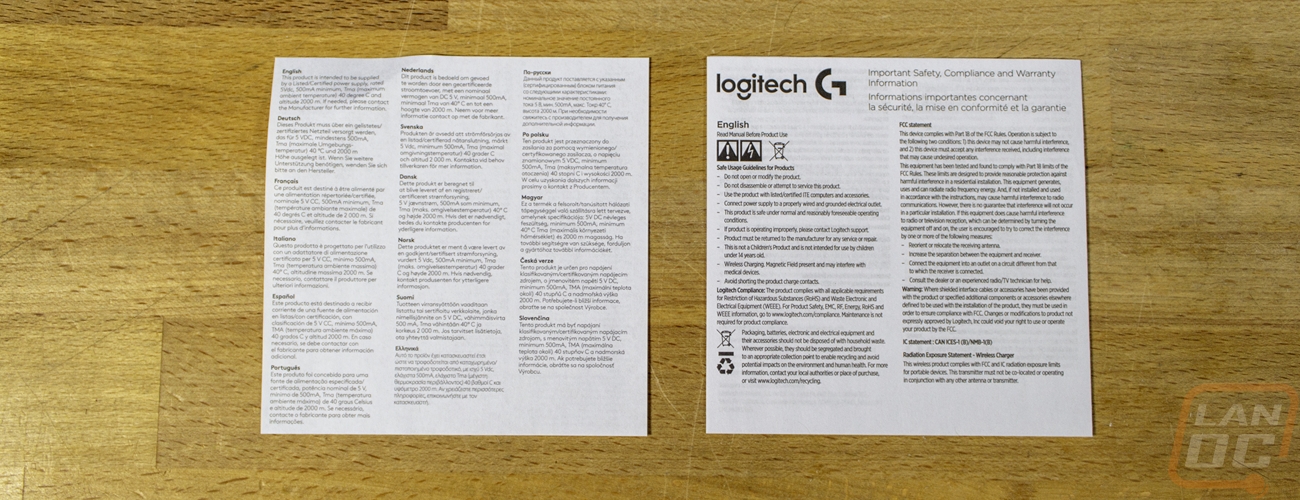
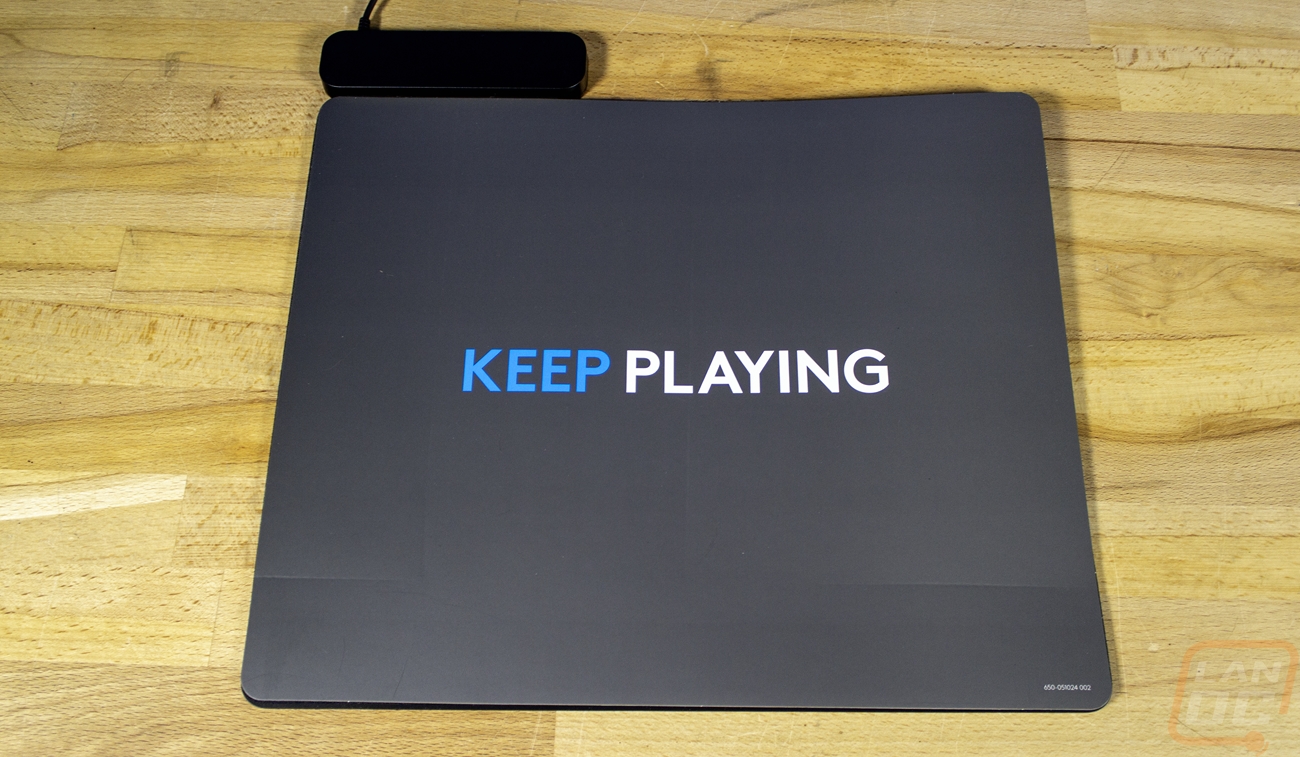
As far as the Powerplay 2 itself, there isn’t too much going on, but I did want to go through its features and most importantly a few things that I noticed that are different between it and the original Powerplay. Physically, the new design is the same size as the original at 13.54 inches long and 13.39 inches wide. The layout is the same as well, with a rubber pad under a mouse pad and then in the top left corner, they have all of the circuitry. One of my issues with the original design was the size and placement of that box, so that being in the same spot and being the same size (but a hair thinner) means I will still have those same issues. Basically, that box and the cord going to it gets in the way of my monitor's stand. This was an issue when I ran a large multi-monitor stand and a single large 42-inch display as well. But I guess I’m in the minority there. That box has changed however, with the original design the Logitech G logo was backlit in RGB and that was the status indicator. This time around they have switched to a simple white LED. That controller on the original design also doubled as a wireless adapter for your mouse and they have removed that as well. That means that now you will need to use the dongle included with your mouse, not pair it to the Powerplay. I hate to see that go, but I do understand that it will help with future compatibility. Specifically, some of the new mice now support much higher report rates and the old design wasn’t going to work with that. But I would have liked to see them put a USB passthrough right on the Powerplay 2 to plug your dongle into. That way you have the best possible wireless connection. The other big change here is the old proprietary winged micro-USB connection is gone and the USB cable is hard wired. I’m happy to see the old design go away with all of the new mice using USB Type-C, not that old design, but I would have liked to see the connection be USB Type-C at the Powerplay 2. It was always nice to be able to unplug the mouse pad and plug directly in for firmware updates or if you had wireless issues. The new cord is a little thinner and is no longer sleeved, not that it was needed in the first place. But this tracks with the cords being included with Logitech’s other products as well.
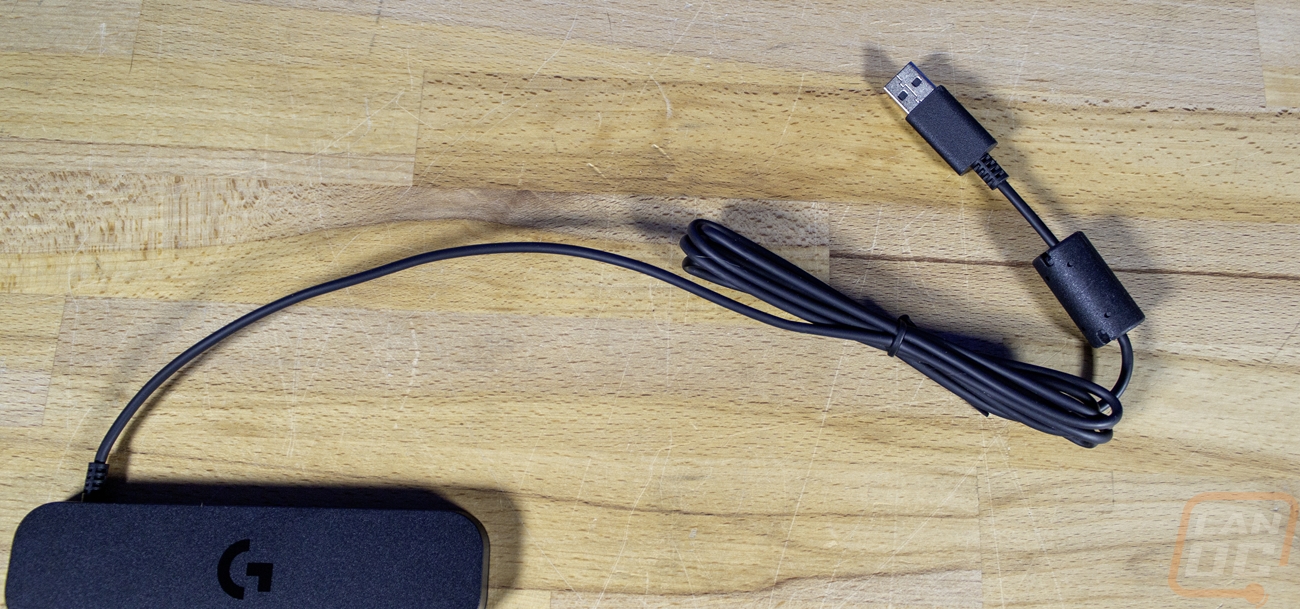

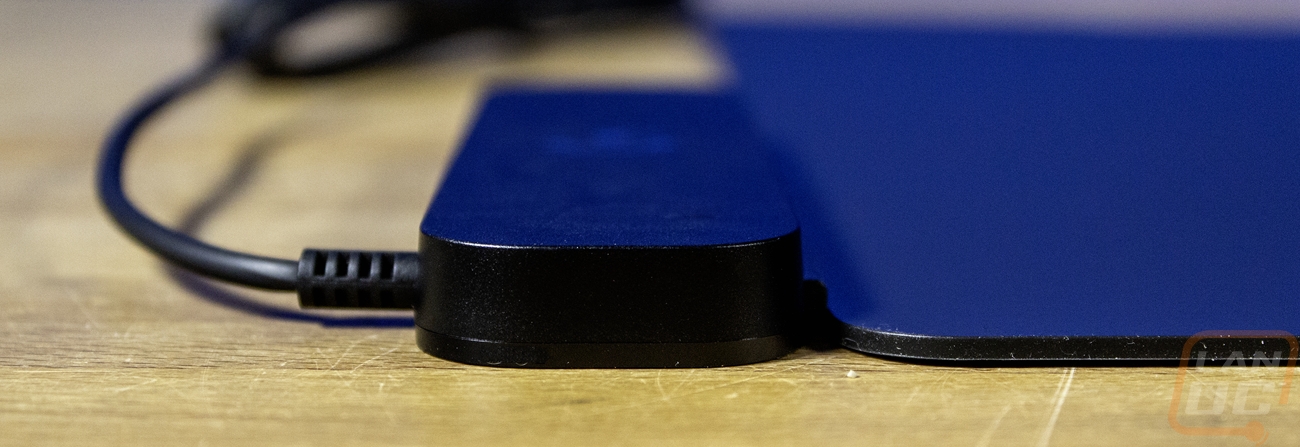

Like I mentioned before, the mouse surface for the Powerplay 2 is the same size as the original Powerplay, but that doesn’t mean that nothing changed here. My other complaint with the original was that the combination of the charging base and the mousepad on top made it thick, and on top of that the pad liked to move around on top of the charging base. This new design no longer has the extra lip around the outside edge that made it uncomfortable. Also, the pad+charger together is now a little thinner as well. The original was 4 mm thick in total, where this one is 3.5 mm thick, but interestingly, they did all that with the mouse pad itself which is now 1.3 mm thick. The charging portion is actually a hair thicker at 2.2 mm, where previously it was 2 mm and 2 mm. The new mousepad design has a static adhesive bottom to grip it to the charger. But with that, we also no longer get both a hard and soft pad, which is disappointing because I preferred the hard pad. With the Powerplay 2 being the same size, you could still use a Logitech G440, but I would have loved to see a thinner hard mouse pad option with the same static cling bottom.
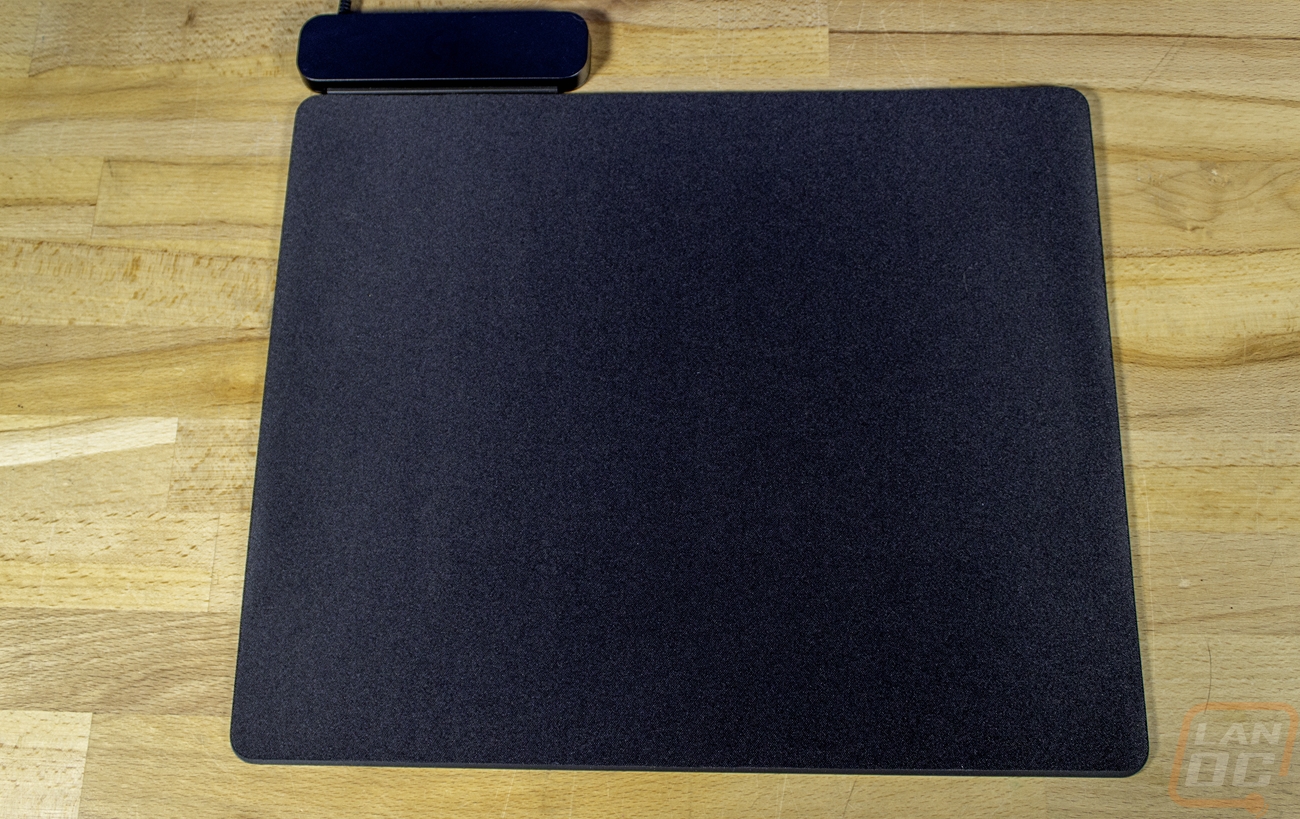
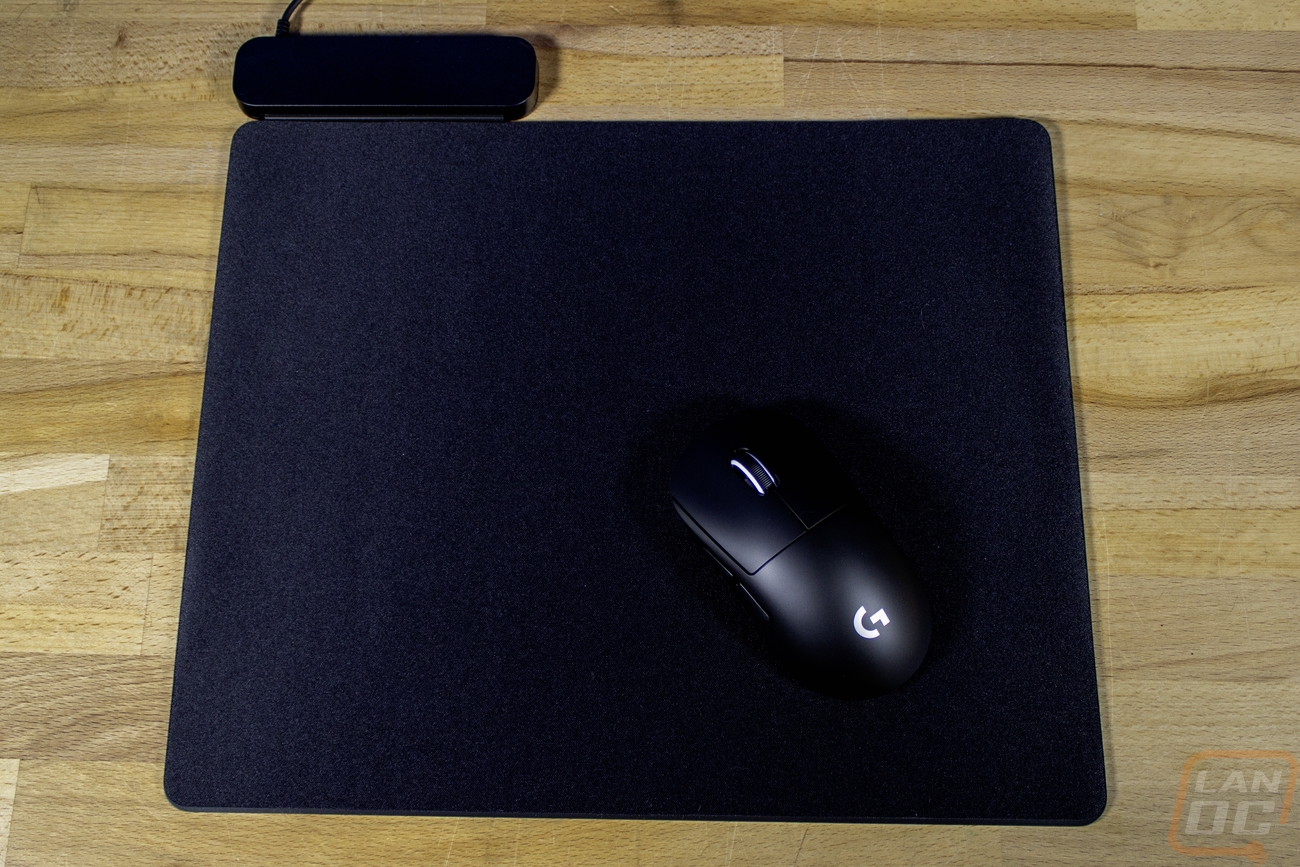
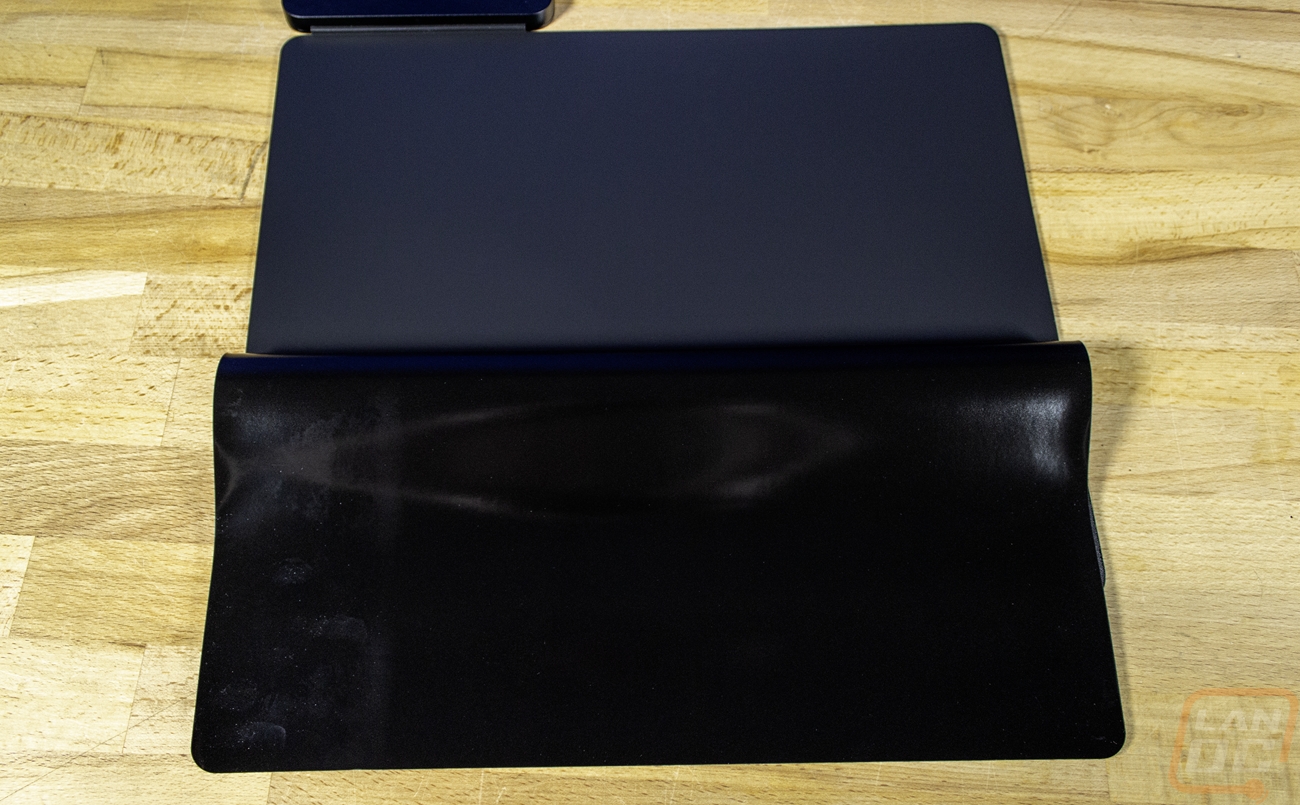
The bottom of the Powerplay 2 has the same finish that the original had across it, which is rubber to help it grip your desk. Then up in the corner, just under the block where the USB cable goes in, they have all of the normal required certification information. That includes the part number and the serial number for your specific pad. The circuitry box has the Logitech G branding on it and then the Powerplay 2 model name. While in our pictures it looks like the same finish as the rest of the bottom of the Powerplay 2, those two areas are a harder plastic and not the grippy rubber finish.


The last part of the Powerplay 2 system is, of course, the puck that comes with it to install in your Powerplay compatible mouse. Well, I call it a puck, Logitech now calls it a coin. The coin hasn’t changed at all from the original design. The coin is round and has two metal contacts that touch magnets inside the mouse and keep it in place while also passing the power into the mouse. I also included a picture of the fake coin that Logitech’s mice normally come with. The back does have all of the FCC information on it, and on the other side, the Powerplay symbol, which is the one change. The old design just had the Logitech G on it. You don’t get easier for installation. You pull out the old coin and toss this one in, and it snaps into place and you are good to go.
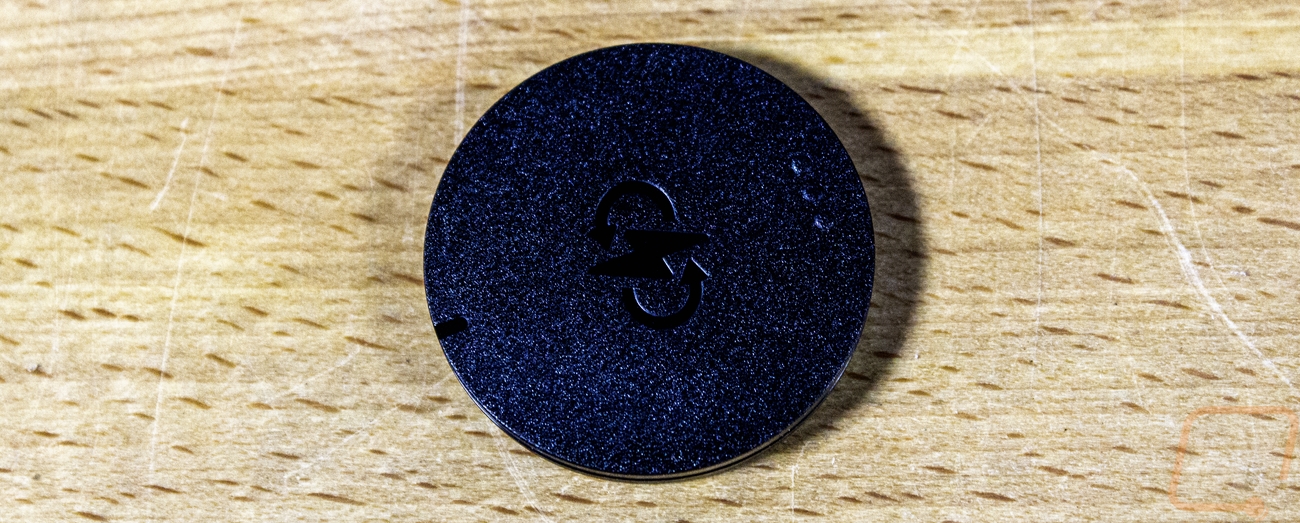
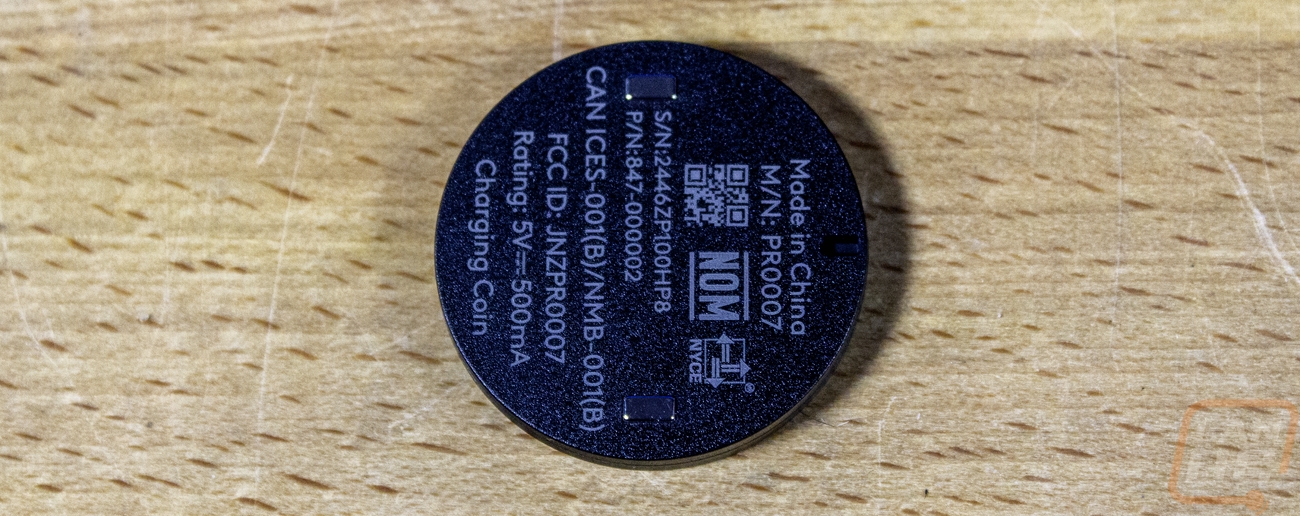


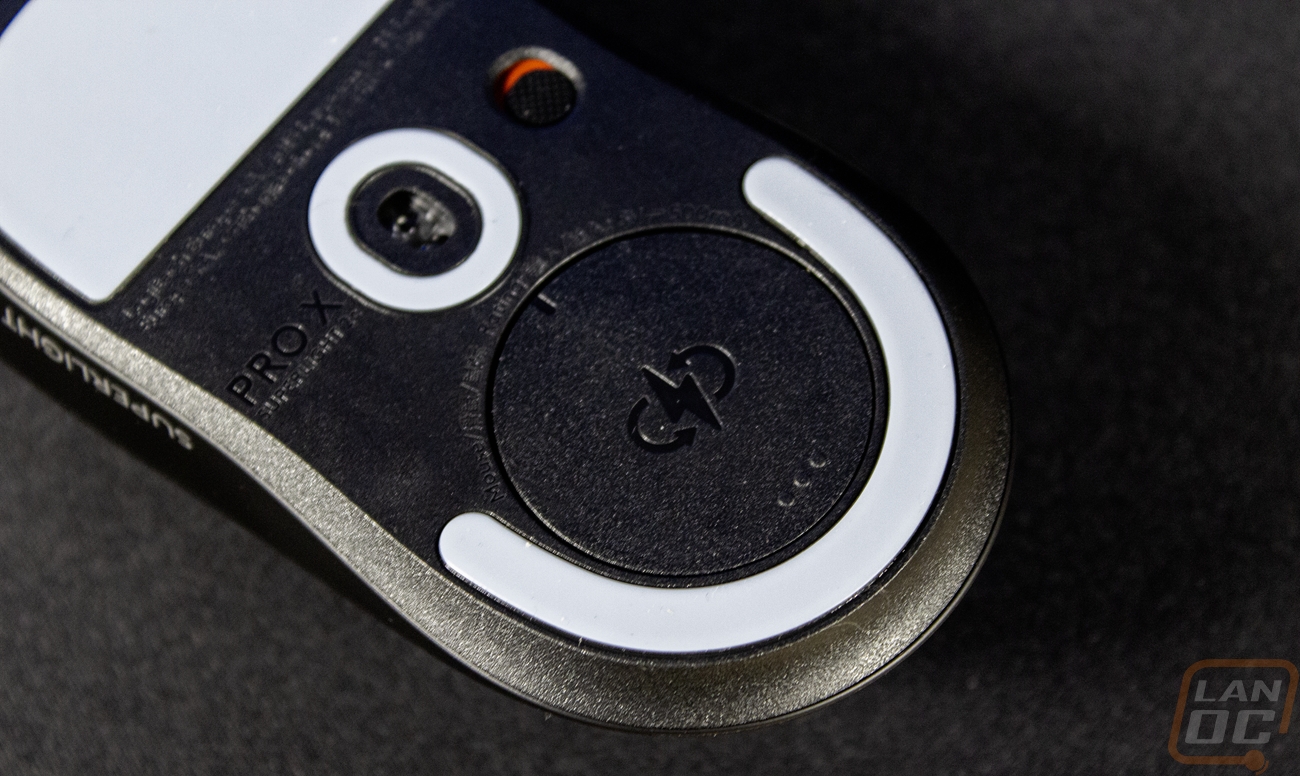
Performance
For testing, I have been using the Powerplay 2 along with the Logitech Superlight 2c that they sent along with it for testing. Having used the original Powerplay for the last seven years, there wasn’t too big of a fuss when switching over. The biggest thing when getting things set up was actually having to have the wireless dongle from the mouse, whereas with the original Powerplay, I could use the wireless receiver built into it. I mentioned it previously, but I do understand the need to drop that feature, mice like the Superlight 2c, for example, now come with more capable receivers to handle the higher refresh rates. But as someone who doesn’t have their PC up on their desk, and with a larger desk, I would prefer there to be a plug for the receiver right on the Powerplay 2. Logitech does give you an adapter to plug the receiver into the end of the mouse’s charging cable to get the receiver up close to your mousepad, but that’s not the cleanest setup when we already have a cable running to the Powerplay 2. That said, because the Powerplay 2 doesn’t have any RGB or the receiver inside, the silver lining is that it doesn’t actually need to be plugged into your PC, it just needs power. So I was able to plug it into the USB charger already on my desk, keeping things a little simpler.
With the Powerplay up and running, I popped the Powerplay coin into the bottom of the Superlight 2c, and once the receiver was also plugged in, I was up and running with the mouse charging. I always find it interesting when you first drop a mouse on the mat that doesn’t have a good charge, it creates enough heat that you can feel it when you move around, if you leave it in one spot long enough. This isn’t an issue at all and isn’t new, but it's something to note. Once the mouse gets charged up, it won’t happen again. Because the Powerplay 2 is independent, I did notice a quirk when messing around. It is possible to charge more than one Powerplay mouse at the same time, but you do need the original Powerplay 2 coin in one of the mice to kick the charger on. With my original PowerPlay coin in a mouse, it wouldn’t turn on, but putting the new coin on the mat at the same time would turn the light on the mat and start charging. When charging low powered mice, the Powerrplay 2 pulled half a watt in total, and it was less than that at other times.
With the Powerplay 2 using the same footprint as the original Powerplay, people who like a huge mousepad may not have enough room but over the years, I haven’t had issues with space. In fact, I often have a phone or something else sitting on the pad as well, and still have room, but I do run a higher DPI than some people for my mice. Because the size is the same and the charging box is in the same spot, I do still have issues with it running into my monitor's feet. But the new, thinner mouse pad does help with the thickness issues that I had with the Powerplay originally. The edge doesn’t have a lip anymore, as well, to keep the pad from moving around because of the new static cling finish on the bottom of the pad, so that doesn’t push up into your arm as well. I do still wish we also had a matching hard pad to go with this design, however as that is still my preferred pad surface.
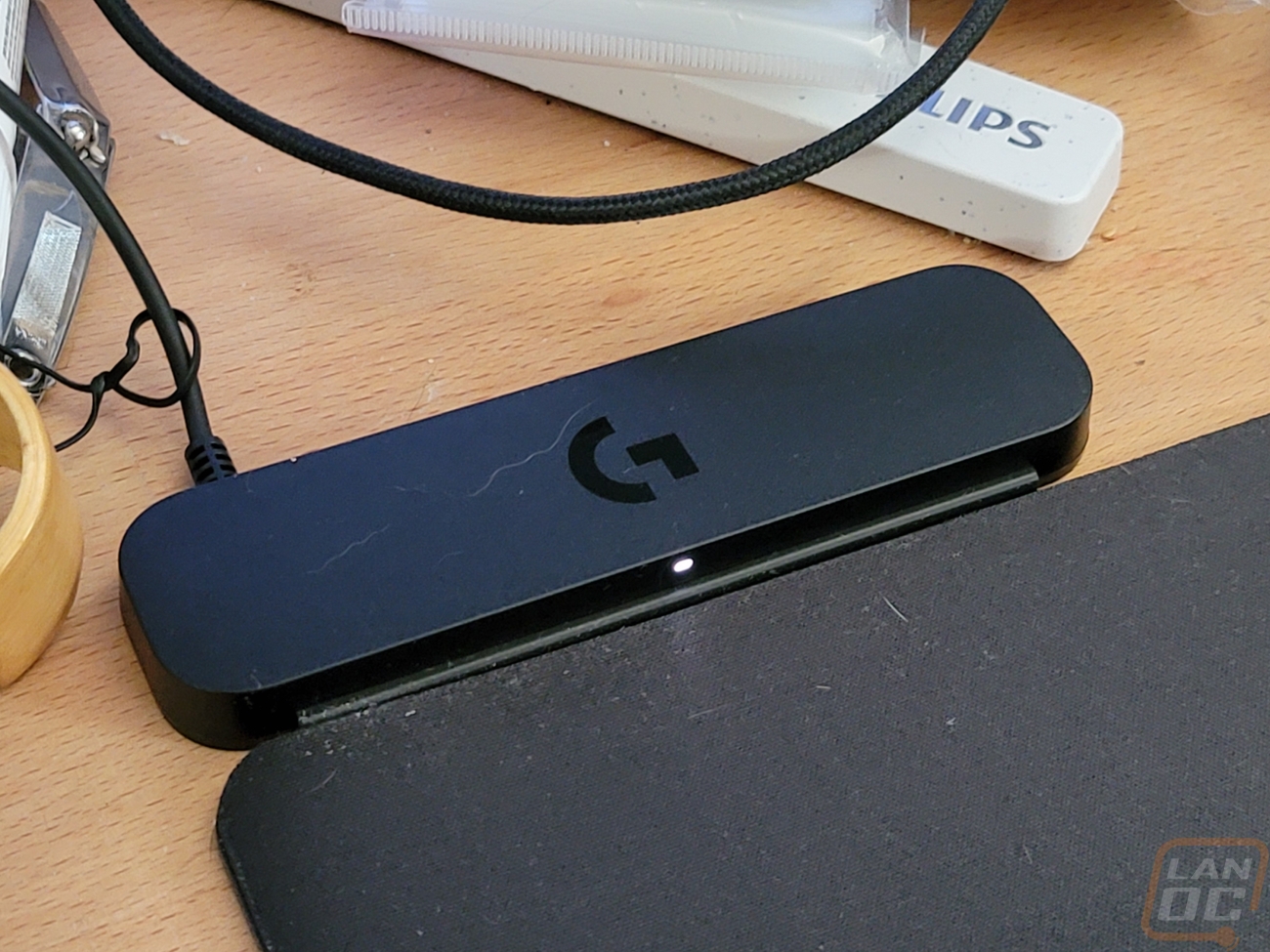
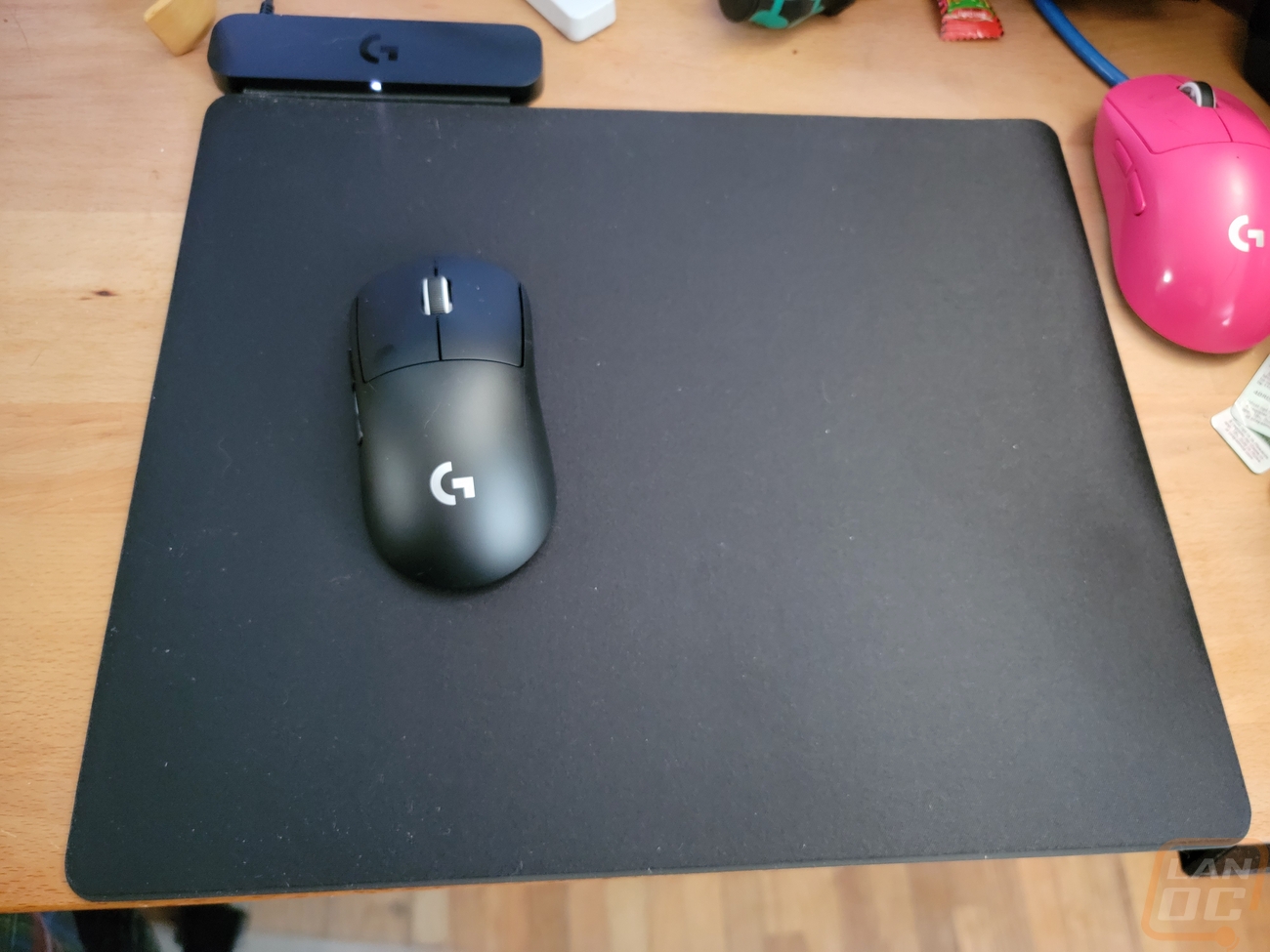
Most importantly, the big feature that hasn’t changed is that you never have to worry about charging your wireless mouse. You get a true wireless experience with no cord on the mouse, and you never have your mouse dying in the middle of a game at the worst possible time. It’s completely set it and forget it. Even if you pull your mouse off the pad, with the exception of the G309, which you can run on the Powerplay 2 with just a capacitor and no battery to save weight, you still have nearly a full charge with any other mouse that should last multiple days away from the Powerplay 2. This is perfect if you pack up and take your mouse to a LAN, for example.
Overall and Final Verdict
With our testing out of the way, we can finally step back and get a look at the whole picture that is the new Logitech Powerplay 2, and it is a surprisingly complicated one. On the surface, they improved on the areas that I complained about with the original Powerplay design. It is slightly thinner and doesn’t have the raised area that would cut into my arm when using it. They also improved how well the pad grips the charger significantly, the old design would slide around, which is why they needed that raised area in the first place. Installation is even easier than before, you no longer even need to install or set up software or even plug it into your PC at all. It can run off of a USB charger. But the biggest issue I had with the original design, which was the location of the cable and the power circuitry is still in the same spot, not that I didn’t expect that. While I’m sure I’m not the only person who has an issue with it, it’s most likely not an issue with most people. My problem with the Powerplay 2 however is what they have taken away. You no longer get both a soft and a hard mousepad included with it. I wish we could at least get a new thinner hard pad design that matches, but that isn’t available either. They also removed the previously built-in receiver, which I do think there was a good reason for them to do, some of Logitech’s mice now connect with a higher refresh rate receiver. But I do wish they had put a USB passthrough connection so you could plug in your dongle near your mouse. But my main issue is that the Powerplay 2, with a few features gone feels like a Powerplay Lite, but it is selling for the same price as the original. I actually really like the new design. If you look at it as a Powerplay Lite and having used the original Powerplay for the last 7 years, I am a huge fan of the convenience that you get by keeping your wireless mouse charged at all times without ever having to give it any thought or consideration. So, for people who have the budget for it, it’s still highly recommended to go with your Logitech Gaming mouse. But I do hope we see the price come down to match the loss of some of the features, and I would love to see a Powerplay 3 that keeps improving on this useful technology that better fits on my desk and has a hard mouse pad option.
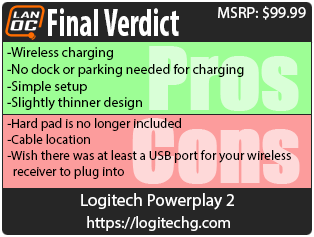
Live Pricing: HERE

